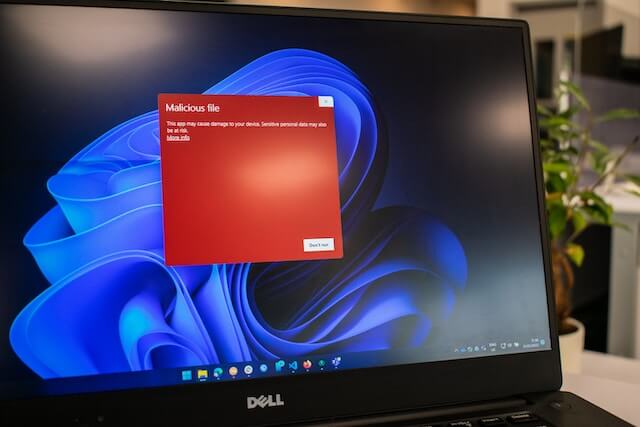Table of Contents
As businesses continue to move towards digital transformation, network security has become a top priority for organizations of all sizes. With the increasing number of cyber threats, it is essential to have the right network security solution and cyber threat intelligence in place to protect your organization’s valuable data and information.
In this blog, we will explore the different types of network security solutions that you can implement to safeguard your organization against cyber-attacks. From firewalls and anti-malware solutions to virtual private networks (VPNs) and zero-trust networking, we will cover it all.
We will also talk about the importance of security information and event management (SIEM) for effective threat detection and response.
Importance of Network Security
Safeguarding sensitive data, and network security is crucial in mitigating cyber attacks and breaches while ensuring secure access in remote environments.
The management of secure network access is essential for data protection. Incorporating email security, application security, and real-time monitoring, NLP-enhanced software solutions play a pivotal role in countering evolving security threats.
Type 1: Firewalls as a Network Security Solution
Firewalls serve as vital network traffic controllers, safeguarding sensitive data and enforcing security policies to prevent unauthorized access and security threats. Next-Generation Firewalls offer real-time threat detection and play a crucial role in network segmentation, ensuring secure access control. They are fundamental in defending against malicious actors, making them an indispensable part of any robust network security solution.
Traditional Firewalls and their Role
Traditional firewalls play a crucial role in network security solutions by monitoring network activity and preventing unauthorized access to sensitive information.
They act as the first line of defense, identifying and blocking network security threats, and protecting against common threats such as denial of service attacks and intrusion attempts.
Additionally, these firewalls focus on network access control and secure access management, forming a barrier between internal and external networks to filter network traffic based on security rules.
Moving beyond with Next-Generation Firewalls (NGFW)
Next-generation firewalls (NGFW) integrate traditional firewall functions with advanced security tools, providing comprehensive protection. With threat intelligence, behavioral analytics, and intrusion detection, NGFWs offer proactive threat management. These firewalls secure cloud environments and mobile devices,
adapting to modern network security needs. NGFWs go beyond traditional firewall capabilities, leveraging machine learning for enhanced security. They play a crucial role in real-time network security, addressing the evolving landscape of cyber threats.
Type 2: Anti-Malware Solutions for Network Security

Safeguarding computer networks from cyber attacks, anti-malware solutions employ data encryption and endpoint security to protect against data breaches and insider threats.
Antivirus software plays a key role in preventing, detecting, and removing malware, ensuring comprehensive data security. Advanced anti-malware software utilizes behavioral analytics and threat detection to defend against various types of cyber threats, providing real-time protection for network security.
The effectiveness of Antivirus software
Antivirus software provides real-time security protection by scanning, detecting, and removing malware. It prevents distributed denial of service attacks secures network access and updates security information to stay ahead of new threats.
Additionally, it safeguards IoT devices and cloud environments, playing a vital role in vulnerability management and network detection.
This software is essential for ensuring email security and protecting against various types of cyber threats.
Advanced Anti-malware software and their benefits
Leveraging threat intelligence and zero-trust network access, advanced anti-malware software offers robust security. These solutions secure remote access VPN and cloud security, providing a secure access service edge.
Additionally, they offer intrusion prevention and endpoint detection, effectively detecting and mitigating security breaches.
By defending against brute force attacks, application layer threats, and unauthorized network activity, advanced anti-malware software ensures comprehensive protection.
Type 3: Virtual Private Networks (VPNs) for Secure Connections

Virtual Private Networks (VPNs) ensure secure remote access and network activity, encrypting data for secure access. They establish a secure access service edge, allowing management in cloud environments.
VPNs protect sensitive information and prevent data loss, maintaining security. In today’s remote working scenario, they provide remote access security for endpoint security.
Additionally, they enable secure access control and network segmentation, enhancing overall network security.
Importance of VPNs in today’s remote working scenario
In today’s remote working scenario, VPNs play a critical role in creating secure network traffic and safeguarding network access control and intrusion detection. They ensure secure access service edge for cloud environments and remote access
VPN. By encrypting sensitive data, VPNs provide secure remote access and secure network traffic, mitigating security threats and offering secure network activity and access management.
Type 4: Zero Trust Networking Solutions
Zero trust network access solutions ensure secure access control and network segmentation, protecting against insider threats and unauthorized network activity.
They focus on secure remote access VPN, cloud environment security, and access management best practices. These solutions provide secure network activity, safeguarding sensitive information, and ensuring data protection in real-time.
Implementing email security, application security, and DDoS attack prevention, zero-trust networking solutions offer robust software solutions for network security.
Understanding Identity and Access Management (IAM)
Enforcing access control and securing network segmentation, IAM solutions protect sensitive data. They enable secure network traffic and ensure a secure access service edge in cloud environments.
Additionally, IAM solutions provide secure remote access VPN, mitigating security threats and unauthorized network activity.
Employing secure network segmentation, IAM solutions play a crucial role in safeguarding sensitive information and preventing data loss.
The Need for Network Segmentation in Zero Trust
Enhancing network security, network segmentation restricts unauthorized access to sensitive data, providing control over traffic flow. It prevents lateral movement of cyber threats and limits the impact of security breaches. Implementing real-time segmentation and email security ensures secure network activity and protects against DDoS attacks.
This approach complements other types of network security solutions like application security and software solutions.
Type 5: Network Monitoring Tools and their Relevance
Network monitoring tools offer real-time insights into network activity, aiding in the identification of security threats and facilitating proactive security operations.
These tools play a crucial role in intrusion detection, threat management, and mitigating insider threats.
By enabling organizations to stay informed about their network activities in real-time, network monitoring tools contribute to ensuring robust email security, application security, and protection against DDoS attacks.
Network Access Control (NAC) for secure access
Ensuring secure network access, NAC solutions enforce policies for devices and users, authenticating and authorizing devices while preventing unauthorized access.
NAC solutions facilitate endpoint security to protect against potential threats such as email security, application security, and DDoS attacks in real-time, making them essential types of network security solutions. Incorporating NLP terms like software solutions and Check Point enhances their overall effectiveness.
Intrusion Detection and Prevention System (IDPS) for active protection
Incorporating advanced security measures, IDPS systems offer real-time threat detection and prevention, aiding in identifying and mitigating malicious software. Providing constant surveillance, these solutions enable security breach prevention and deliver real-time threat intelligence, elevating the overall network security posture. With their proactive approach, IDPS systems decisively detect and prevent security threats, making them essential components of robust network security strategies.
Type 6: Data loss prevention (DLP) strategies
Data loss prevention (DLP) strategies play a pivotal role in securing sensitive data. Including data encryption, DLP solutions prevent data loss, ensuring compliance with data protection regulations. They extend their reach to secure data across cloud environments and effectively prevent data breach incidents. By incorporating email security and real-time monitoring, DLP solutions offer advanced protection against potential threats.
Decrypting Data Encryption and its role in DLP
Data encryption plays a vital role in ensuring the security of sensitive information, preventing unauthorized access, and facilitating secure remote access. It secures data both in transit and at rest, adding an extra layer of protection. Decrypting encrypted data requires proper access management, ensuring that only authorized personnel can access the information. This encryption process is a crucial aspect of DLP strategies and helps in preventing data loss incidents.
Type 7: Importance of Security Information and Event Management (SIEM)
The centralized collection of security information is a key feature of SIEM solutions. They facilitate real-time monitoring of security events and support threat intelligence analysis. SIEM solutions also play a crucial role in security incident response and aid in compliance management. By providing a comprehensive overview of the network’s security status, SIEM solutions offer invaluable protection against potential threats.
User and Entity Behavior Analytics (UEBA) as a part of SIEM
User and Entity Behavior Analytics (UEBA) significantly enhance threat detection capabilities within Security Information and Event Management (SIEM) systems. By analyzing user and entity activities, UEBA solutions provide crucial behavioral analytics insights. This enables the identification of abnormal network access patterns and aids in insider threat detection. The incorporation of UEBA as a part of
SIEM empowers organizations to proactively identify and thwart security threats in real-time, bolstering their overall network security posture.
How can the right Network Security Solutions protect your organization?
They prevent unauthorized access, mitigate security threats in cloud environments, secure remote access to sensitive data, safeguard against data breaches, and enable secure access control management.
To protect your organization from potential cyber threats, it is crucial to implement the right network security solutions. Firewalls act as a barrier between your internal network and external networks, ensuring that only authorized traffic is allowed.
Anti-malware solutions help detect and eliminate any malicious software that may attempt to infiltrate your network. Virtual Private Networks (VPNs) provide secure connections for remote workers, ensuring that data is encrypted and protected.
Zero Trust Networking Solutions prioritizes identity and access management, implementing strict controls and network segmentation to limit access to sensitive data. Network monitoring tools, such as Network Access Control (NAC) and Intrusion Detection and Prevention System (IDPS), actively monitor and protect your network against unauthorized access and potential threats.
Data loss prevention (DLP) strategies, including data encryption, help safeguard sensitive information from being compromised. Security Information and Event Management (SIEM) systems analyze and detect any suspicious activity within your network, providing real-time alerts and responses.
By implementing the right cyber security solution, you can ensure the protection and integrity of your organization’s data and networks.

